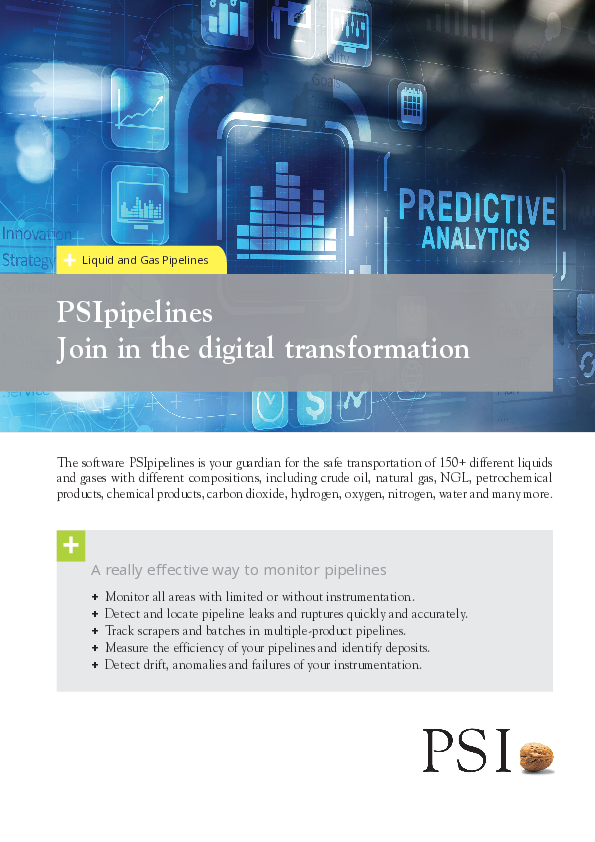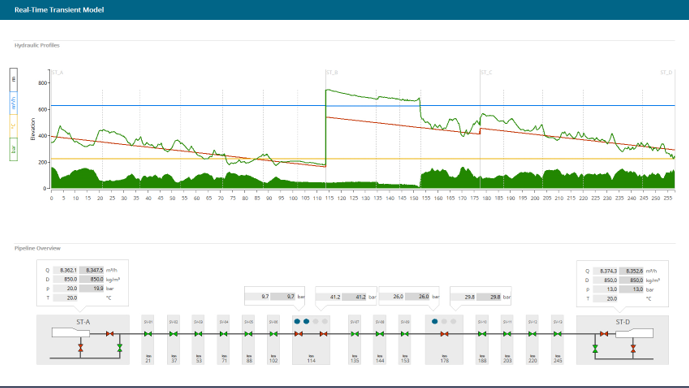
Pinpoint inefficiencies, improve the accuracy of demand predictions and streamline expensive processes. Enjoy greater visibility into equipment performance and get more real-time insights. Improve proactive maintenance processes and minimize human error. Lower the environment footprint generated by operations. Create pipeline management solutions from a wide range of incredible applications.
PSIpipelines incorporates a complete range of powerful real-time applications to assist operators in monitoring their liquid and gas pipelines. These applications add value to other mission critical systems like SCADA. They enhance situational awareness and provide a greater use of important information for safe and cost-efficient operations.
PSIpipelines is made for upstream, midstream and downstream pipeline operations. The applications are designed for any complexity, from single pipeline to large pipeline systems. Today, the software supports the transportation of more than 150 mass compositions.
Benefits at a glance
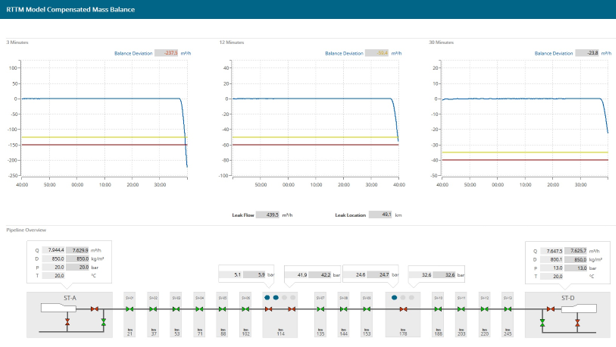
-
Reliable and precise Reliable leak detection and precise leak location.
-
Advance warning Early detection of undesirable operating states.
-
24/7 monitoring Permanent monitoring of all hazardous pipeline sections.
-
Uninterrupted No transport interruptions or production downtime.
-
Effective support Effective support to avoid transport failures.
Modules

Hydraulic simulation
The accurate determination of flow dynamics requires extensive knowledge of the conditions at any time at any point of a pipeline. It is PSI’s modelling principle and technology that makes the difference in terms of reliability, sensitivity, accuracy and robustness.
-
Real-time transient modelling
The Real-Time Transient Modelling (RTTM) application is a tool that provides reliable and comprehensive information about the actual but invisible physical processes inside a pipeline. The results are used by operators to have information in unmetered areas, identify changing conditions, make correct decisions and observe the consequences of initiated actions.
-
Look-ahead simulation
The Look-Ahead Simulation application is a tool that identifies in advance any negative drift to undesirable hydraulic conditions. It is used to prevent assets from damage and is based on the RTTM hydraulic data model and runs on a cyclical basis. Cycle times can be individually configured. The simulation can be started either manually by the operator or it runs permanently in the background.
-
What-if simulation
The What-If Simulation application is a tool that determines in advance the consequences of operator-initiated actions. It is used to prevent critical events, find optimal settings for future operations, analyse the impacts of changes in demands and supplies of commodities and check the effects of changes on operational facilities (instrumentation, valves, pumps, etc.)
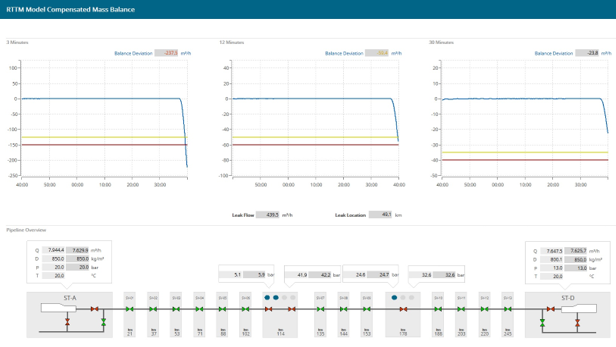
Leak detection system
The Leak Detection System is a tool to reliably detect a leak as fast as possible and to locate a leak as accurate as possible. Its purpose is to alarm on incidents. PSIpipelines LDS applications are internal-based detection methods that look at conditions inside the pipeline to detect commodity loss. These methods are commonly known as computational pipeline monitoring.
PSIpipelines LDS is approved by the independent experts of TÜV and fully complies with industry and international standards including TRFL (Technical Guideline on Pipelines), API 1130 Computational Monitoring for Liquids, Saudi Aramco Engineering Standard SAES-Z-003 and IEC EN 61508 (SIL 1).
-
RTTM-LDS
RTTM-LDS is a very powerful application for detecting leaks during all operating conditions (steady-state, transient and shut-in). It uses the results of the hydraulic simulation to calculate precise mass balances and line-fills for all pipeline sections.
-
Negative pressure wave
The NPW method is based on the analysis of pressure signals. When a leak occurs, it causes a negative pressure wave propagating in both directions, upstream and downstream of a leak’s location. The wave induces pressure drops at measurement points. These events, including time series before and after an event, are recorded and pre-processed by RTUs before being transmitted to the LDS for further detection and location analysis.
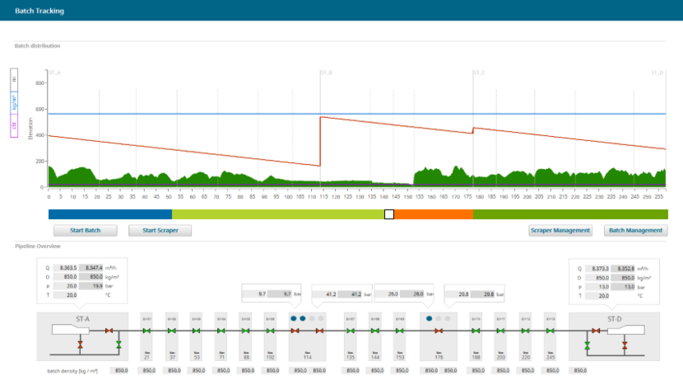
Tracking
PSIpipelines provides a comprehensive tracking system. Data is permanently exchanged between the RTTM and the tracking system to ensure very precise calculation results. The tracking applications utilize velocity profiles from the RTTM. The batch tracking application provides density data to the RTTM during the movement of different products.
-
Pig tracking
The Pigging Device and Sphere Tracking application is a tool that precisely tracks the movement of pigging devices or spheres and predicts arrival times to the next block valve and/or receiving facility. This application can track different types (also numerous simultaneously) of scrapers, pipeline inspection gauges and batch separation spheres within a pipeline.
-
Batch tracking
The Batch Tracking application is a tool that supports the transportation of different types of liquids in the same pipeline. It is used to set up optimal batch sizes and configurations taking equipment availability and downtime into account and to take advantage of variable energy costs for pump power.
-
Precision batch cutting
The Precision Batch Cutting application is a tool that significantly reduces transmix volumes and product contamination. The corresponding savings are an important revenue generator for pipeline companies. PBC ensures that more product volumes get to the customer and that control of product quality is increased.
-
Drag reducing agents
The DRA Tracking application is a tool that determines the effectiveness of these additives and hence save money. Drag Reducing Agents reduce the decrease of pressure caused by friction within the flow of a pipeline. Using DRA enables operators to increase pipeline flow capacity, reduce energy consumption, optimize efficiency and reduce line pressure.
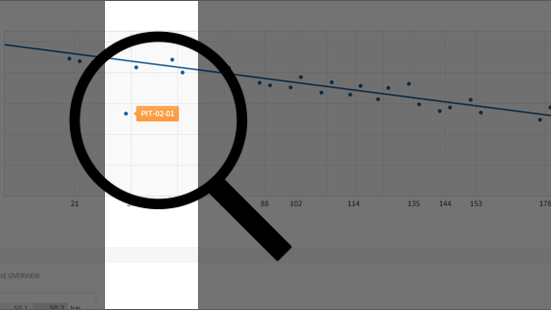
Monitoring
PSIpipelines provides numerous applications which monitor the pipeline and determine their integrity. They can monitor the stress on pipelines and detect signs of material fatigue in a timely manner. They are able to identify faulty measured values and detect anomalies. They can also determine undesirable slack line conditions and set the optimum operating pressure at critical points.
-
Pipeline stress monitor
The Pipeline Stress Monitor application is a tool that maintains pipeline safety and extends the life time of the pipeline’s infrastructure. In order to predict material fatigue, it is important to monitor the stress that is caused by varying pipeline pressures.
-
Pipeline efficiency
The Pipeline Efficiency application is a tool that ensures flow assurance, reduces pumping energy and identifies optimal pigging frequency. It indicates pressure deviations from optimal operation and notifies the operator in advance to initiate cleaning scraper runs when the calculated efficiency falls below a certain level.
-
Slack line control
The Slack Line Monitoring and Control application is a tool that identifies in advance undesired slack line conditions. It is also used to set the optimal operating pressure at critical points along a pipeline in order to reduce pump power consumption and to save costs.
References
Our customers are market leaders in their segment and have often been using our products successfully for decades. In addition to outstanding software, which is developed in the form of product releases that are continuously updated and optimized, trustworthy communication and seamless customer support are at the heart of our customer loyalty. This has resulted in long-standing and strong business partnerships, which we maintain on an ongoing basis.

